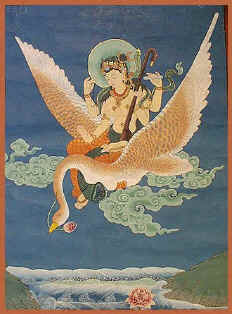Been pfutzing around with my pictures too, and realized I have to have better order in the house. So, now I have re-imported every raw picture I still owned into Lightroom and rename the directories according to date and content.
Feels good!
And... Staffan and I have ordered our tickets for next summer. PHEW! 7400 SEK per person for trips going from Stockholm on the 8th of June to Delhi, then Katmandu, then Delhi, then Bangalore and then Delhi back to Stockholm via Doha on the 22nd or August.
Quite the trip this time.
From today on - I will study one chapter of the Manual of Standard Tibetan so that I remember something from last time spent in Kathmandu and Rangjung Yeshe Institute.
 |
| My Saraswati will hopefully keep me safe on all my ventures... |










 In Tibetan, Saraswati is Yang Chenmo, or when her musical aspect is emphasized, she is
In Tibetan, Saraswati is Yang Chenmo, or when her musical aspect is emphasized, she is